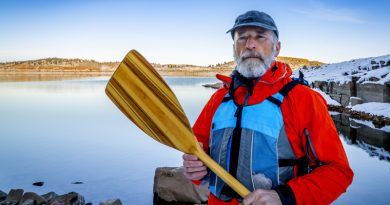
What is the Proper Paddling Technique for Kayaking?
A fundamental question often arises for both newcomers and seasoned paddlers alike: “What is the proper paddling technique for kayaking?” This question is not merely about moving the kayak forward; it’s about doing so efficiently, effectively, and safely.
Today, I delve into this question based on years paddling rivers, lakes, and coastal waters. There is something almost sacred about the first push-off from the shore in a kayak—the moment when the land releases you and the water takes over. The paddles dip into the cool, shimmering water, slicing through with a practiced grace. This is how to do it.
Proper paddling technique in kayaking involves more than merely flailing one’s arms. It is about understanding:
- Body Mechanics: How you sit and move your body affects your paddling efficiency and stamina.
- Paddle Handling: The type of paddle you use and how you hold it can significantly impact your performance and comfort.
- Stroke Types: Different situations and environments require different paddling strokes.
- Safety and Endurance: Incorrect technique can lead to fatigue or injuries, impacting safety on the water.
The challenge lies in mastering these aspects and integrating them into a fluid motion that feels almost like second nature.
Implementing the Best Solutions
To address these challenges and enhance your kayaking experience, follow these structured steps in proper paddling technique:
- Optimal Sitting Posture: Sit up straight with your back slightly reclined against the kayak’s backrest. Legs should be bent at a comfortable angle and feet placed firmly against the footpegs. Good posture supports effective paddling and reduces fatigue.
- Grip and Paddle Positioning: Hold the paddle with both hands just over shoulder-width apart. Ensure that when the paddle blade enters the water, your hands are in line with your elbows, which should be bent at about a 90-degree angle.
- The Forward Stroke: This is the most fundamental stroke in kayaking.
- Entry Phase: Immerse the paddle blade fully on one side, close to the kayak.
- Power Phase: Utilize your torso, not just your arms, to pull the blade through the water in a smooth motion.
- Exit Phase: When the blade reaches your hip, lift it out of the water, preparing to repeat on the other side.
- Turning Strokes: To change direction, use sweeping strokes. Extend the paddle on the side opposite to the direction you want to turn and pull it back in a wide arc.
- Bracing to Prevent Capsizing: Practice low and high braces to maintain balance. These involve using the paddle as a support on the water’s surface when you feel unsteady.
Essential Resources and Tools
To perfect your paddling technique, consider utilizing:
- Instructional Videos and Books: These can provide visual and detailed breakdowns of techniques.
- Professional Coaching: A few sessions with a kayak instructor can correct any inefficiencies in paddling technique.
- Practice Equipment: Use ergometers and other training tools to practice strokes and build endurance off the water.
- Kayak Clubs and Training Groups: Joining a community offers practical advice and the opportunity to practice with more experienced paddlers.
Conclusion
Proper paddling technique in kayaking is crucial not only for efficiency and speed but for safety and enjoyment. Understanding and implementing the right techniques transform paddling from a mere activity into an art form, where each stroke carries you seamlessly forward, closer to nature’s heart. As the sunset colors bleed into the water’s surface, reflecting back the mastery of a well-paddled kayak, remember that each stroke is a dialogue with the water. Master this dialogue, and you master the streams, the rivers, and the vast oceans.






